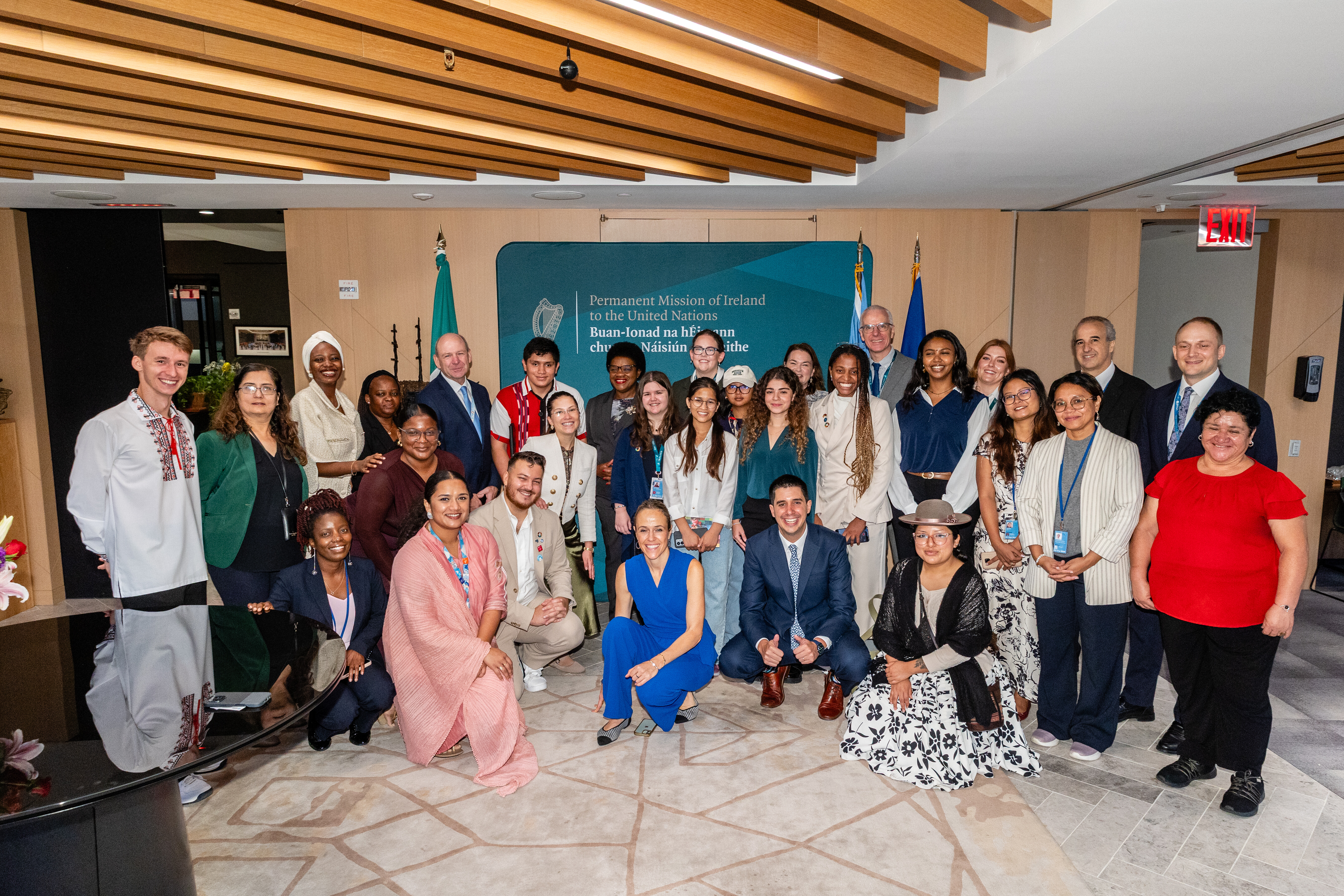Stakeholder Capitalism: Beyond GDP - measuring what matters
Natalie Pierce: Welcome to Stakeholder Capitalism, a show from the World Economic Forum exploring how economies can be made to work for progress, people and the planet. I'm Natalie Pierce. And with me is the co-author of the book Stakeholder Capitalism, exploring what's gone wrong with capitalism and what can be done to fix it.
Peter Vanham: It's a real pleasure to be here with you, and indeed, to talk about this book that I co-authored with Klaus Schwab, the founder and executive chairman of the World Economic Forum. He's been thinking for 50 years about how capitalism can work, not just in the short-term interest of shareholders, but for all of a company's stakeholders, including employees, the communities it's operating in and, of course, the planet as a whole.
Stakeholder Capitalism: A Global Economy that Works for Progress, People and the Planet Image: WILEY Natalie Pierce: Let's explore how this show will play out. In each episode we will explore one problem outlined in your book associated with capitalism and globalisation.
Peter Vanham: Then we'll turn to two expert guests. The first one will talk more in detail about what the issues are related to this problem. And then the second one will talk more about what are possible solutions.
Natalie Pierce: And at the end of each episode, we will have a 'post-match analysis' exploring if we've arrived at answers or solutions or where we might go next from here.
Peter Vanham: Today's topic is 'beyond GDP'. Why that magic number that countries used to measure their economic success may not be fit for purpose anymore.
Natalie Pierce: Peter, in a nutshell, what's gone wrong with GDP?
Peter Vanham: Let's look at the global picture. Let's look at what happened with GDP from 1970 to 2019. Now, we see an absolute explosion in nominal terms over the last 50 years: [global GDP growth of] 30 times.
But it doesn't tell us the full picture. We have to adjust for inflation. in economic terms, we have to look at 'real GDP'. And the second adjustment we need to make is we have to adjust for population growth. So we have to look at 'real GDP per capita'. If we do that, then we see that that number only increased twofold. Still not bad, but quite a lot less than that 30-fold increase we saw the first time. And remember, there is something called 'median income'. This is the real incomes that people have. If we look at that number in the US, for example, the world's largest economy, we see that number only increased by 40% - less than 1% increase per year.
Does GDP growth really mean we're all richer? Image: WEF All this growth happened at the expense of the planet. If we look at our 'bio capacity', that's the planet's capacity to regenerate what we used up last year, we see that that was more or less in balance with our ecological footprint in 1970. But over the years, we started to create what's called an 'ecological deficit'. And by 2019, we started using twice as much as what the planet could regenerate. Two planets? There's only one. That's clearly an unsustainable situation. So income increases that are not so high, and we use up much more of the planet's resources than we can regenerate. Those are the problems with GDP.
GDP rises, the environment falls Image: WEF Natalie Pierce: Thanks, Peter. It's now time to call on our first expert witness, Peter, who have you found on your travels to tell us more about the failings of GDP?
Peter Vanham: Diane Coyle. She's a professor of public policy at the University of Cambridge in the UK and also a former adviser to the UK Treasury. She's, amongst other things, the author of GDP A Brief and Affectionate History. And she's also the head of something called the Beyond GDP initiative.
Peter Vanham: You've called GDP a 'wartime metric'. Could you tell us what you mean by that?
Diane Coyle: The initiative to understand the economy as a whole, to find some aggregate measure of national income and production, actually dates from the Great Depression in the 1930s, but it was wartime that gave the impetus to the development of what turned into the GDP that we're so familiar with. The governments in the US and UK wanted to understand how much could they produce for the war effort - what sacrifices was the civilian population going to have to make in terms of consumption and saving? And then after the war years, this became naturalised by the United Nations in a process to develop a whole statistical framework known as a 'system of national accounts' - GDP is one part. And all countries are meant to do this the same way so that we can compare across countries, we can compare over time, and understand the extent to which economic progress is happening,
Natalie Pierce: Pioneers of the metric voiced their concerns about GDP. Can you tell us more?
Diane Coyle: There were intense debates right at the start about what should and shouldn't be include, because how do we define what we mean by the economy? So the decision was taken not to include most informal work done in the home. A lot of it falls to women in many countries. Things like childcare, cleaning, cooking. A lot of the services that we get from nature are not included, either. And through the 1960s and 70s, there were environmentalists pointing out the adverse consequences of not understanding the cost that nature was going to be paying for current economic activity. So those debates have been constant, and I think the reason that there's so much more impetus now in the Beyond GDP initiative is because we've understood that the gap between that definition that was created in the early 1940s. We understand that we have not been taking account, literally, of some really important consequences of our activity.
Natalie Pierce: What is the Beyond GDP initiative?
Diane Coyle: I would describe it as a coalition of policymakers, economists, campaigners who are trying to work towards better metrics of progress in our society. The debate about how we should measure the economy dates back quite a long time, and my sense is that particularly with the impact of the pandemic in the past year, we're at a kind of turning point when this initiative could really start to reshape the way that decisions get taken in business and in policy.
Natalie Pierce: Diane, you mentioned in your book that a tree standing does nothing for GDP until it is cut down and consumed. Does GDP promote environmental destruction?
Diane Coyle: It, unfortunately, has often done so because short-term increases in money spent in marketing services and goods based on natural resources or the resources themselves has added to GDP growth. And the consequence of that has been not thinking about the longer term and therefore sustainability. So just as any company would have a profit and loss account on the balance sheet, we need that too. We need to be able to understand the long-term consequences on the stocks of natural assets for today's activities so that we can have sustainable growth.
Peter Vanham: One of the things that you also wrote about is how the contributions of the financial sector were not included in GDP before, and they are now. Could you tell us a little bit more about why and how those adjustments were made?
Diane Coyle: You're highlighting the importance of understanding that this is a human-constructed definition of things that are important to us. And the financial sector is a great example because its definition in the statistics has changed several times over the decades since the Second World War. All of the changes have increased its apparent contribution to GDP. What we use currently in the latest set of revisions is called financial intermediation services indirectly measured, and that does kind of measure the price that they receive, but it also measures the risk that they're taking. But these kinds of issues point you towards the fundamental question, which is how well is GDP measuring what we really care about, which is economic welfare. And there are some quite profound questions now being raised by the Beyond GDP initiative about what do we care for.
Peter Vanham: Then could median income perhaps be a better way to say how people are really faring, since it's a measure that more people can relate to than GDP?
Diane Coyle: There's been a divergence between the increase in GDP in many countries and the increase in what people are receiving in their incomes from their work and an increase correspondingly in profits which have been increasingly concentrated in the hands of a smaller and smaller number of companies. Something about that mechanism for sharing prosperity has gone awry. GDP isn't measuring the increase in prosperity the way it used to until maybe 10 or 15 years ago. So certainly, looking at median household incomes gives you a much better idea of how the typical person in a particular country is getting on and are they seeing their lives getting better.
Natalie Pierce: Diane, what's the key takeaway for those that are listening with us today?
Diane Coyle: The key takeaway is don't take any statistics as gospel. They are ideas. And what we need to do is think about which ideas matter, which purposes matter, and therefore what should we be measuring? And that's the conversation that we all need to take part in now.
Natalie Pierce: Thank you, Diane. You have presented the case against GDP persuasively and presented some alternative ways we might measure economic progress. You can learn more about Diane's work at the website for the Bennett Institute for Public Policy.
Our second expert witness who has gone beyond GDP and found an alternative way to measure our economy's. In this next segment, we are going to explore solutions, where should we look in the world, Peter?
Peter Vanham: Well, we would have to travel quite far. In fact, all the way to New Zealand, where they're trying some new and different metrics than GDP. Let's first listen to Jacinda Ardern, the prime minister of New Zealand, speaking at the World Economic Forum's annual meeting in Davos in 2019.
Jacinda Ardern: In New Zealand, we're roughly projecting 3% growth, unemployment's at 3.9% on traditional measures, budget surpluses. People would look at us and go, you're doing okay. But we have homelessness at staggering rates, one of the highest rates of youth suicide in the OECD. So our plan is through the wellbeing work that we're doing, a living standards framework to address the societal wellbeing of our nation, not just our economic wellbeing.
Peter Vanham: That was Jacinda Ardern speaking about the Living Standards Framework. And joining us now live from New Zealand is one of the architects of this framework. Professor Girol Karacaoglu. He's the head of the School of Government at Victoria University in Wellington and also the former chief economist of the New Zealand Treasury. And there, of course, he developed this framework. So could you tell us what the Living Standards Framework is and how it came about?
Girol Karacaoglu: The framework is very much based on the OECD's Better Life, or How's Life, indicators which recognises that income and employment are very important contributors to people's wellbeing, but also acknowledges, based on a lot of empirical evidence from around the world, that people care about other things as well, such as social connections. The Wellbeing Framework tries to turn it into public policy, a public policy that's trying to improve both material and non-material sources of wellbeing, including social connections and environmental quality.
Natalie Pierce: How is New Zealand faring, according to the framework?
Girol Karacaoglu: The recent data shows that the evidence and performance of New Zealand is very mixed. In some domains, such as per capita income, housing affordability, we are doing very poorly. On the other hand, life expectancy, social connections, safety are relatively high and pollution is low. Natural capital is under huge stress - biodiversity is getting worse. But social capital, including trust in government, is quite high. So it's a mixed picture.
Natalie Pierce: And how is it received by the people in New Zealand?
Girol Karacaoglu: Almost all the public sector, both central and local regional government, are now framing policy propositions and investment propositions around the Wellbeing and Living Standards Framework and regional and local governments are doing their long-term planning exercises by asking people what they care about, and trying to capture that.
Peter Vanham: What's the benefit of thinking in terms of stocks of capital as opposed to yearly production value?
Girol Karacaoglu: The reason they are important is they highlight that, while we need to deliver the flows in order to keep and give current prosperity to people living today, if we can preserve appropriately those capital stocks, that means that we can also deliver wellbeing to future generations. One of the big themes in New Zealand public policy today is intergenerational wellbeing. In other words, how can we ensure wellbeing to the wider population while at the same time preserving the capital stocks to ensure that future generations also have and enjoy wellbeing?
Peter Vanham: So how do we know if these metrics are successful?
Girol Karacaoglu: What it forces us to do, and this is something very live and active in New Zealand, is to think of public policy as packages of policies that complement each other. So a policy package that focuses on both improving the wellbeing through mental health of an individual while at the same time incentivising a switch of production and consumption towards greener, cleaner technology as a package, would serve both purposes.
Natalie Pierce: If you had one takeaway that you would like to share from this conversation with your students, what would it be?
Girol Karacaoglu: There is a circularity between individual ways of living and the total social and communal outcomes. So I would urge them in whatever they do to always think: 'Is it helping society? Is it good for the environment? Does it give me good material comfort? And does it give everyone the right to speak and contribute?' If you live that way, then society will benefit as well, both today and across generations.
Natalie Pierce: Peter, you set the problem out for us: GDP is no longer fit for purpose. What did you hear today that makes you more optimistic for a different way forward?
Peter Vanham: Well, I like that first idea that we heard - that quick fix of looking at median household incomes rather than aggregate GDP. I think if you look at incomes, it tells you much better how real people are doing in an economy as opposed to that dumber GDP that really doesn't say much. So that's the first thing that I thought was very helpful.
Natalie Pierce: GDP may work for an economy, but GDP does not work for people, and incomes is a better metric that actually means something to people. But Professor Karacaoglu still told us that income can still be an aggregate number that is detrimental to the environment or for work-life balance.
Peter Vanham: When he talked about this idea of wealth being a stock of capital as opposed to only a flow, I think that that was quite helpful too, because indeed, you know, it helps you see these things as more sort of something that was given to us from our parents and our grandparents, everyone that came before us, and we have to leave to those who come after us. And so that looking at wealth and capital and everything that really produces value more from that stock perspective than from the flow perspective, I think, is the other aspect.
Natalie Pierce: I totally agree. I think for Professor Karacaoglu, that emphasis on intergenerational wellbeing was something that as a young person obviously really resonated with me. I also really liked what Diane mentioned around GDP as a concept - it is just that - it can be transformed, it can be altered, it can be reimagined entirely.
Peter Vanham: She talked about that idea that previously we looked at GDP and we looked at it as a wartime metric, and therefore, for example, we didn't include those unpaid household chores, whereas we all know that they're very valuable. And I think in a peacetime economy, perhaps we should value that more also by including it in that number that GDP is.
Natalie Pierce: Yes, it's not GDP or its GDP and. And Jacinda Ardern also emphasised some of those other indicators. That's all the time we have. Thank you to Peter and thank you to our guests, Diane Coyle and Girol Karacaoglu.
Peter Vanham: We'll be back soon with another episode of Stakeholder Capitalism, and this time we'll look at employees and they are treated. And we'll also ask if we should perhaps re-evaluate the role of trade unions.
Natalie Pierce: Join us for the next episode of Stakeholder Capitalism. See you next time at wef.ch/stakeholdercapitalism.














